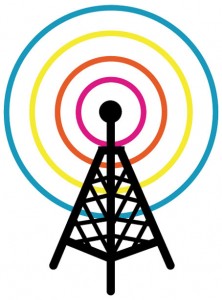 Yesterday the Federal Communications Commission issued 181 pages of metrics demonstrating, to any fair reader, the continuing rapid rise of the U.S. broadband economy — and then concluded, naturally, that “broadband is not yet being deployed to all Americans in a reasonable and timely fashion.” A computer, being fed the data and the conclusion, would, unable to process the logical contradictions, crash.
Yesterday the Federal Communications Commission issued 181 pages of metrics demonstrating, to any fair reader, the continuing rapid rise of the U.S. broadband economy — and then concluded, naturally, that “broadband is not yet being deployed to all Americans in a reasonable and timely fashion.” A computer, being fed the data and the conclusion, would, unable to process the logical contradictions, crash.
The report is a response to section 706(b) of the 1996 Telecom Act that asks the FCC to report annually whether broadband “is being deployed . . . in a reasonable and timely fashion.” From 1999 to 2008, the FCC concluded that yes, it was. But now, as more Americans than ever have broadband and use it to an often maniacal extent, the FCC has concluded for the third year in a row that no, broadband deployment is not “reasonable and timely.”
The FCC finds that 19 million Americans, mostly in very rural areas, don’t have access to fixed line terrestrial broadband. But Congress specifically asked the FCC to analyze broadband deployment using “any technology.”
“Any technology” includes DSL, cable modems, fiber-to-the-x, satellite, and of course fixed wireless and mobile. If we include wireless broadband, the unserved number falls to 5.5 million from the FCC’s headline 19 million. Five and a half million is 1.74% of the U.S. population. Not exactly a headline-grabbing figure.
Even if we stipulate the FCC’s framework, data, and analysis, we’re still left with the FCC’s own admission that between June 2010 and June 2011, an additional 7.4 million Americans gained access to fixed broadband service. That dropped the portion of Americans without access to 6% in 2011 from around 8.55% in 2010 — a 30% drop in the unserved population in one year. Most Americans have had broadband for many years, and the rate of deployment will necessarily slow toward the tail-end of any build-out. When most American households are served, there just aren’t very many to go, and those that have yet to gain access are likely to be in the very most difficult to serve areas (e.g. “on tops of mountains in the middle of nowhere”). The fact that we still added 7.4 million broadband in the last year, lowering the unserved population by 30%, even using the FCC’s faulty framework, demonstrates in any rational world that broadband “is being deployed” in a “reasonable and timely fashion.”
But this is not the rational world — it’s D.C. in the perpetual political silly season.
One might conclude that because the vast majority of these unserved Americans live in very rural areas — Alaska, Montana, West Virginia — the FCC would, if anything, suggest policies tailored to boost infrastructure investment in these hard-to-reach geographies. We could debate whether these are sound investments and whether the government would do a good job expanding access, but if rural deployment is a problem, then presumably policy should attempt to target and remediate the rural underserved. Commissioner McDowell, however, knows the real impetus for the FCC’s tortured no-confidence vote — its regulatory agenda.
McDowell notes that the report repeatedly mentions the FCC’s net neutrality rules (now being contested in court), which are as far from a pro-broadband policy, let alone a targeted one, as you could imagine. If anything, net neutrality is an impediment to broader, faster, better broadband. But the FCC is using its thumbs-down on broadband deployment to prop up its intrusions into a healthy industry. As McDowell concluded, “the majority has used this process as an opportunity to create a pretext to justify more regulation.”

